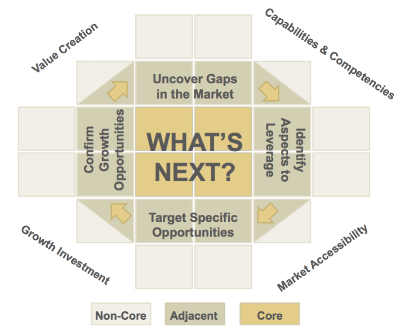Who doesn’t love a bird’s eye perspective? Soaring high above the trees allows you to really see the landscape. But how do you get that same bird’s eye view for your industry? The answer, of course, is by constructing a market map.
The market map is a cornerstone of the tactical innovator’s tool kit and provides a structural view of the markets in which your products and services compete. You will profile your competitors, catalog different products and platforms, segment buyers and users and evaluate channels, all in the name of supporting more informed product decisions. A well-constructed market map helps you identify:
- Product segments that are ripe for expansion
- Emerging technologies that may pose a threat
- Capabilities and competencies that can be applied to other segments
- A broader view of competitive moves
- Existing business models (those that work, as well as those that do not)
- Market size and growth rates for each product segment
- Customer opportunities available now
There are many benefits to the detailed work that goes into the market map, not the least of which is that you now have a factual basis to make decisions about how and where to invest and what strategies to pursue to deliver near-term results. The market map provides a way to assemble detailed information to support tactical decisions about how to respond to competitor’s moves. In addition, the market map can serve as the starting point to identify the partner or acquisition targets that will help you enter or leverage a new opportunity segment. The power of perspective as seen through a market map provides both a wider and more granular view of any industry in which you compete. It’s a great way to ground your team – or your entire company – with an understanding of where you fit in the market and what your path forward should look like.
Stay tuned for my next tactical innovation post that expands on the powers of the market map and how this powerful tool can work hand-in-hand with your product road map.


